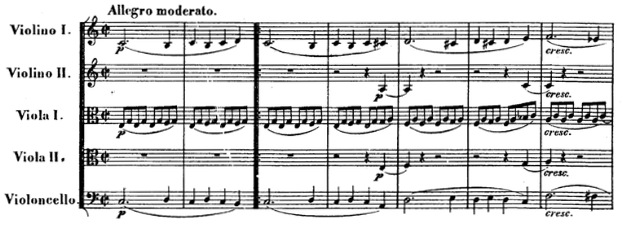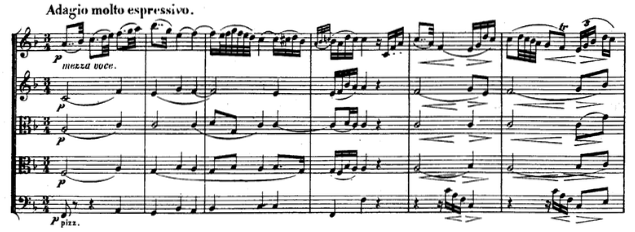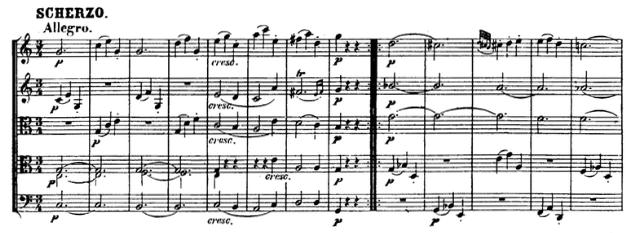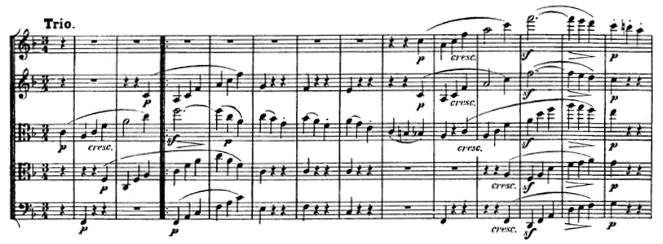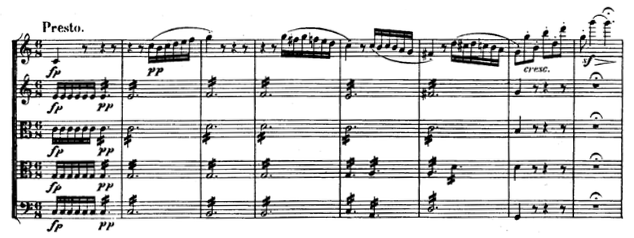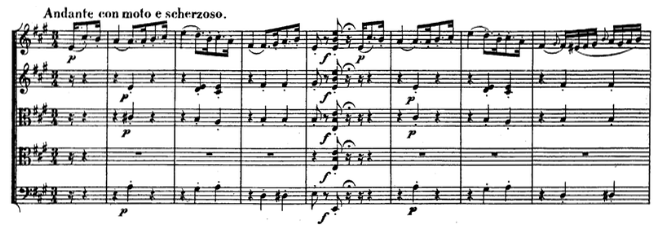Ludwig van Beethoven
String Quintet in C major, op.29
Media Review / Comparison
2013-02-09 — Original posting (on Blogger)
2013-08-07 — New standard layout applied
2014-11-07 — Re-posting as is (WordPress)
2016-07-11 — Brushed up for better readability
Table of Contents
Introduction / The Recordings
As an “appendix” to my blog series about recordings of Beethoven’s string quartets in my music collection, this is a short report about two recordings of the string quintet in C major, op.29 — references to the CDs are given in the respective sections.
Here’s the very short list of the recordings of this composition (both part of larger CD sets, see below):
The Composition
The String Quintet in C major, op.29 by Ludwig van Beethoven (1770 – 1827) features the following movements:
1. Allegro moderato (alla breve, 2/2)
2. Adagio molto espressivo (3/4)
3. Scherzo: Allegro — Trio (3/4)
4. Finale: Presto (6/8) — Andante con moto e scherzoso (3/4)
Comments on the Individual Recordings
Endellion String Quartet, David Adams (2008)
Beethoven: Complete String Quartets, Quintets & Fragments
WCJ (Warner Classics & Jazz) 2564 69471-3 (stereo, 10 CD); ℗ / © 2008

Recorded in 2008, with Andrew Watkinson, Ralph de Souza, Garfield Jackson, David Adams, David Waterman — for general comments see Beethoven, String Quartet op.18/1.
Notes on the Movements
1. Allegro moderato (alla breve, 2/2)
9’56”; 1/2 = 84 (Allegro moderato)
Faster than the Kuijken’s — too fast? The articulation is somewhat fuzzy, sometimes superficial, the vibrato too strong and omnipresent, affecting the intonation, and in the evolution part there are passages with coordination issues. I also find their setup (violin I/II, viola I/II, cello on the right) less favorable than the Kuijken‘s, even though it may facilitate the coordination between violins and the two violas.
2. Adagio molto espressivo (3/4)
9’43”; 1/4 = 39 (Adagio molto espressivo)
Not always really Adagio (calm): ‘m not sure why I sometimes have the impression of a slight unrest — is it because they can’t / don’t always hold their pace? Too much vibrato.
3. Scherzo: Allegro — Trio (3/4)
3’45”; 3/4 = 118 (Scherzo) — 3/4 = 108 (Trio)
Relatively fast (for this ensemble?), the articulation in the Scherzo part is often unclear, somewhat superficial.
4. Finale: Presto (6/8) — Andante con moto e scherzoso (3/4)
8’27”; 3/8 = 130 (Presto) — 1/4 = 78 (Andante con moto e scherzoso)
Definitely too fast (rather prestissimo assai) — at this tempo, the artists can’t articulate properly, the articulation is really superficial (sure, if this could be mastered properly, this tempo would make up for an interesting piece!). Also, the tempo contrast to the Andante con moto e scherzoso inserts is too big — these slower sections break the flow (they appear completely static), make the piece fall apart.
| Recommendation: | No |
| Rating: | 3.0 (3 / 3 / 3 / 3) |
Kuijken Quartet, Marleen Thiers (2006)
Beethoven: String Quartets op.59, String Quintet op.29
Kuijken Quartet
Challenge classics CC72362 (2 x SACD); ℗ / © 2010

Recorded in 2006, with Veronica Kuijken, Sigiswald Kuijken, Sara Kuijken, Marleen Thiers, Wieland Kuijken — for general comments see Beethoven, String Quartet op.59/1.
Notes on the Movements
1. Allegro moderato (alla breve, 2/2)
10’14”; 1/2 = 78 (Allegro moderato)
Slightly slower than the Endellion String Quartet — clearly the better tempo, allowing for more detail, better articulation. Also, the instrument placement with the cello in the center seems superior to me — more balanced acoustically, and enhancing those passages where Beethoven composed a dialog between the violin duets and the two violas.
2. Adagio molto espressivo (3/4)
10’37”; 1/4 = 34 (Adagio molto espressivo)
Beautiful: serene, lucid, really calm — I like this!
3. Scherzo: Allegro — Trio (3/4)
3’56”; 3/4 = 112 (Scherzo) — 3/4 = 108 (Trio)
Light, clean and detailed articulation, expressive, with excellent phrasing!
4. Finale: Presto (6/8) — Andante con moto e scherzoso (3/4)
9’38”; 3/8 = 120 (Presto) — 1/4 = 95 (Andante con moto e scherzoso)
Slower than the Endellion String Quartet: to me, this is the right tempo, still permitting a clean, clear articulation, while the piece is still very expressive, dramatic.
| Recommendation: | Yes! |
| Rating: | 5.0 (5 / 5 / 5 / 5) |


